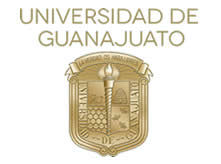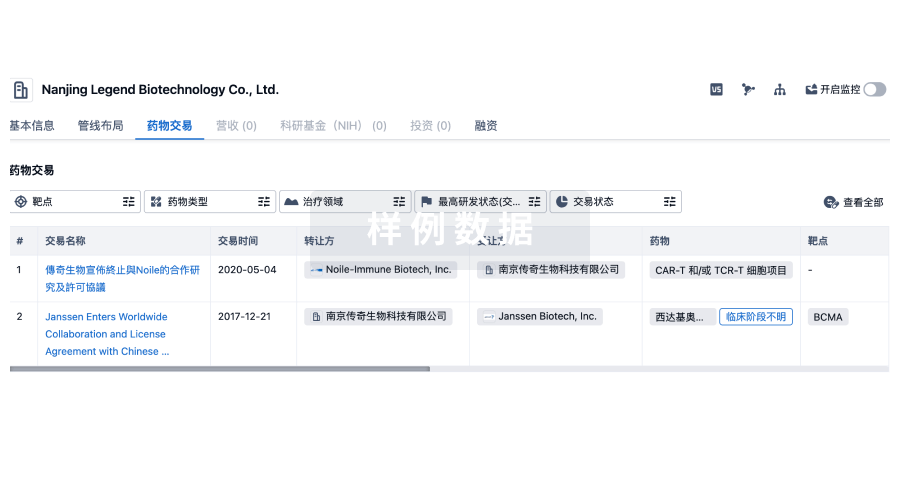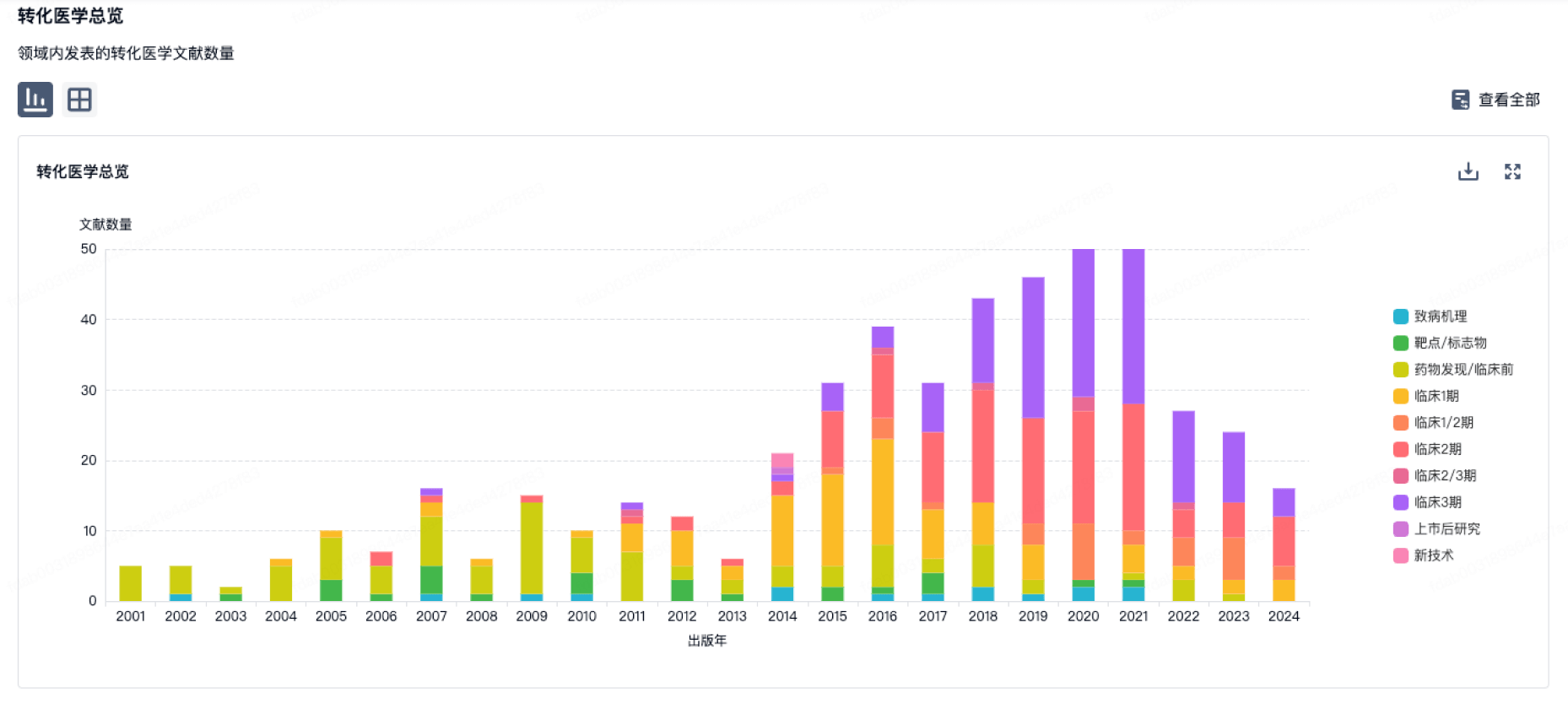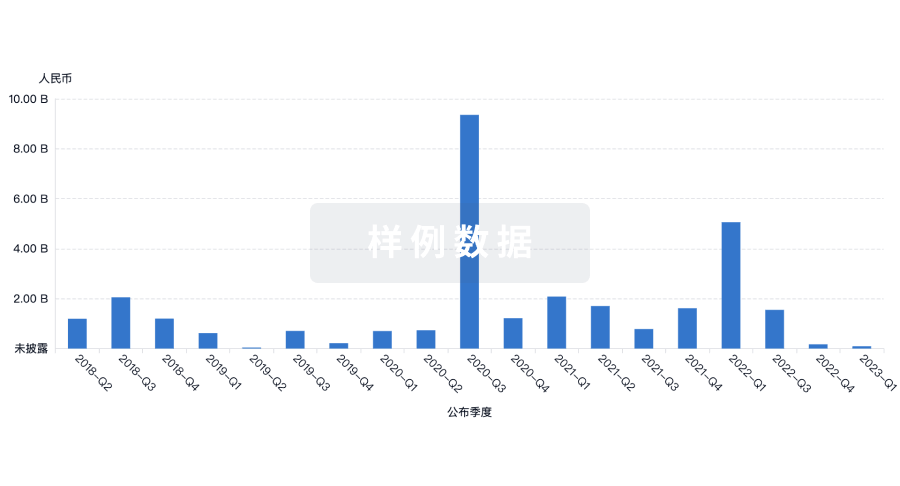预约演示
更新于:2025-12-06

Universidad de Guanajuato
更新于:2025-12-06
概览
标签
皮肤和肌肉骨骼疾病
其他疾病
小分子化药
疾病领域得分
一眼洞穿机构专注的疾病领域
暂无数据
技术平台
公司药物应用最多的技术
暂无数据
靶点
公司最常开发的靶点
暂无数据
| 排名前五的药物类型 | 数量 |
|---|---|
| 小分子化药 | 2 |
关联
2
项与 Universidad de Guanajuato 相关的药物作用机制 线粒体蛋白抑制剂 |
最高研发阶段临床3期 |
首次获批国家/地区- |
首次获批日期- |
作用机制 APP抑制剂 [+3] |
最高研发阶段临床3期 |
首次获批国家/地区- |
首次获批日期- |
42
项与 Universidad de Guanajuato 相关的临床试验NCT07149506
Efficacy of Oral or Topical Catechins vs. Placebo as an Adjuvant for the Prevention and Management of Radiation Dermatitis in Oncology Patients: a Randomized Trial
Introduction Radiation-induced dermatitis (RID), which includes both acute and chronic forms, affects up to 95% of patients undergoing radiation therapy. Despite its high incidence, there are currently no validated prevention and management recommendations specifically for the mexican population. Catechins, particularly epigallocatechin gallate and epicatechin, are emerging as a promising and readily accessible therapeutic option for radiation damage in skin and other organs, including conditions like esophagitis, intestinal injury, and mucositis.
Objective This study aims to evaluate the utility of oral or topical catechins in preventing and managing acute and chronic radiation-induced dermatitis in cancer patients, comparing their effectiveness against standard treatment.
Material and Methods
This will be a randomized, double-blind, phase III clinical trial with a longitudinal and comparative design. Patients will be allocated into two primary study groups: prevention (n=81) and treatment (n=81). Each group will be further divided into four treatment arms:
Epigallocatechin gallate (experimental aerosol)
Epicatechin (experimental capsule)
Saline control arm (aerosol)
Microcrystalline cellulose excipient control arm (capsule)
All participants across all groups will receive standard care. Study endpoints will include the assessment of utility, toxicity, quality of life, and cosmesis, using various validated scales and scores.
Ethics This study adheres to the principles outlined in the Helsinki Declaration (2024), the Nuremberg Code, and Mexico's General Health Law on health research. Given the wide therapeutic margin of the interventions, the study is classified as minimal risk.
Statistical Analysis To evaluate the efficacy of the intervention (specifically, the change in the risk of dermatitis and fibrosis), we will calculate the hazard ratio using Cox regression and compare it with the Log-Rank test. Additionally, both fixed and random effects models will be performed and compared using the likelihood ratio test.
Objective This study aims to evaluate the utility of oral or topical catechins in preventing and managing acute and chronic radiation-induced dermatitis in cancer patients, comparing their effectiveness against standard treatment.
Material and Methods
This will be a randomized, double-blind, phase III clinical trial with a longitudinal and comparative design. Patients will be allocated into two primary study groups: prevention (n=81) and treatment (n=81). Each group will be further divided into four treatment arms:
Epigallocatechin gallate (experimental aerosol)
Epicatechin (experimental capsule)
Saline control arm (aerosol)
Microcrystalline cellulose excipient control arm (capsule)
All participants across all groups will receive standard care. Study endpoints will include the assessment of utility, toxicity, quality of life, and cosmesis, using various validated scales and scores.
Ethics This study adheres to the principles outlined in the Helsinki Declaration (2024), the Nuremberg Code, and Mexico's General Health Law on health research. Given the wide therapeutic margin of the interventions, the study is classified as minimal risk.
Statistical Analysis To evaluate the efficacy of the intervention (specifically, the change in the risk of dermatitis and fibrosis), we will calculate the hazard ratio using Cox regression and compare it with the Log-Rank test. Additionally, both fixed and random effects models will be performed and compared using the likelihood ratio test.
开始日期2025-09-01 |
申办/合作机构 |
NCT06788054
Effect of a 12-week Intradialysis Exercise Program on Functional Capacity, Body Composition and Survival in Hemodialysis Patients: a Randomized Clinical Trial
Chronic kidney disease and renal replacement treatments (hemodialysis, peritoneal dialysis, kidney transplant) produce various alterations at the level of muscle, bones, fat content and the heart; can alter physical capabilities such as muscle strength, resistance to climb a step repeatedly intensely, and the ability to move the joints freely, in addition to producing an increase or decrease in weight and alterations in its distribution (for example, decreasing muscle and increase fat). The above, added to the particular factors of hemodialysis such as the reduction in daily time to exercise due to the sessions, or the fatigue after it, can together generate greater repercussions on functional capacity and thus increase the risk of suffering from cardiovascular problems. and accelerate the evolution of the disease.
Therefore, this study aims to determine the effect of a 12-week supervised physical exercise program during hemodialysis on strength and ability to move, the amount of fat and muscle in the body, as well as bone wear. ; and compare these results with a group of patients who do not perform supervised exercise. In addition, it will be determined how exercise can act in the long term, preventing the risk of hospitalization and death due to cardiovascular causes. The above is useful in order to establish recommendations and protocols that help us increase the quality of life and survival of the person.
Therefore, this study aims to determine the effect of a 12-week supervised physical exercise program during hemodialysis on strength and ability to move, the amount of fat and muscle in the body, as well as bone wear. ; and compare these results with a group of patients who do not perform supervised exercise. In addition, it will be determined how exercise can act in the long term, preventing the risk of hospitalization and death due to cardiovascular causes. The above is useful in order to establish recommendations and protocols that help us increase the quality of life and survival of the person.
开始日期2025-01-20 |
申办/合作机构 |
NCT06667180
Effects of Low-intensity Transcranial Magnetic Stimulation on Major Depressive Disorder, and on 5-hydroxyindoleacetic Acid and Brain-derived Neurotrophic Factor Levels
The goal of this randomised clinical trial is to evaluate the effects of transcranial magnetic stimulation (TMS) on major depressive disorder (MDD) and on the levels of 5-hydroxyindoleacetic acid (5-HIAA) and brain-derived neurotrophic factor (BDNF). TMS works to treat MDD by using low-intensity magnetic fields to modulate certain areas of the brain, activating them which can help improve the mood of those suffering from the disorder. Final metabolites of serotonin such as 5-HIAA and growth factors such as BDNF will also be studied before starting the intervention and at the end to check if there is a significant change in their concentration. Likewise, its safety will be evaluated by monitoring the symptoms that they present at the end of the intervention and one month later. The main questions that are intended to be answered are:
* Does low-intensity TMS reduce depressive symptoms in patients with MDD?
* Does low-intensity TMS significantly change the initial and final concentrations of 5-HIAA and BDNF?
* What adverse effects might patients who are exposed to low-intensity TMS experience? The researchers will compare low-intensity and accelerated TMS with sham TMS to see if low-intensity TMS works to treat MDD.
Participants:
* Will undergo an initial clinical assessment to confirm the disorder, comorbidities, and general health status.
* A 5 mL blood sample will be taken before starting the intervention.
* Low-intensity TMS will be applied for 4 days, 5 daily sessions of 200 s with 10-minute intersession intervals at a field intensity of 2-4 milliTesla (mT) and frequency of 50 Hz in theta bursts. Symptoms will be monitored daily.
* A 5 mL blood sample will be taken at the end of the intervention and general health status clinimetrics will be reapplied.
* Does low-intensity TMS reduce depressive symptoms in patients with MDD?
* Does low-intensity TMS significantly change the initial and final concentrations of 5-HIAA and BDNF?
* What adverse effects might patients who are exposed to low-intensity TMS experience? The researchers will compare low-intensity and accelerated TMS with sham TMS to see if low-intensity TMS works to treat MDD.
Participants:
* Will undergo an initial clinical assessment to confirm the disorder, comorbidities, and general health status.
* A 5 mL blood sample will be taken before starting the intervention.
* Low-intensity TMS will be applied for 4 days, 5 daily sessions of 200 s with 10-minute intersession intervals at a field intensity of 2-4 milliTesla (mT) and frequency of 50 Hz in theta bursts. Symptoms will be monitored daily.
* A 5 mL blood sample will be taken at the end of the intervention and general health status clinimetrics will be reapplied.
开始日期2024-10-28 |
申办/合作机构 |
100 项与 Universidad de Guanajuato 相关的临床结果
登录后查看更多信息
0 项与 Universidad de Guanajuato 相关的专利(医药)
登录后查看更多信息
4,300
项与 Universidad de Guanajuato 相关的文献(医药)2025-12-01·ENVIRONMENTAL RESEARCH
Microplastic pollution across the Brazilian coastline: Evidence from the MICROMar project, the largest coastal survey in the Global South
Article
作者: Fonseca, Estefan M da ; Mendonça, Juliana Dos Santos ; Gaylarde, Christine C ; Guimarães, Ariane ; Freitas, Ítalo Nascimento ; Menezes, Ivandilson Pessoa Pinto de ; Soares, Wesley Rodrigues ; Oliveira, Maria Betânia Melo de ; Barbosa, Neuciane Dias ; Carvalho, Élida Priscila Bogéa ; Gomes, Alex Rodrigues ; Pierri, Bruno da Silva ; Guimarães, Abraão Tiago Batista ; Luz, Thiarlen Marinho da ; Malafaia, Guilherme ; Rodrigues, Aline Sueli de Lima ; Arias, Andrés H ; Ferreira, Raíssa de Oliveira ; Delgado, Jessica de Freitas ; Jacobucci, Giuliano Buzá ; Matos, Letícia Paiva de ; Nunes, Bárbara Beatriz da Silva ; Brito, Rafaela Ribeiro de ; Pádua, Bruno da Cruz ; Gonçalves da Silva Matos, Stênio ; Santiago, Omar Cruz
Microplastic (MP) pollution in coastal environments poses a significant threat to biodiversity and ecosystem services, with potential implications for human health, particularly in the Global South, where data on large-scale impacts are scarce. As part of the MICROMar project, we conducted the most extensive standardized survey of MPs in tropical beach sediments, analyzing 4134 samples from 1024 beaches along approximately 7500 km of Brazil's coastline. MPs (from 300 μm to <5 mm) were extracted, quantified, and characterized by morphology, color, type, and chemical composition. MP occurrence varied widely across states (16.5 %-90.6 %), with 69.3 % of beaches contaminated. 24,549 MPs, mostly irregular fragments dominated by white, green, and blue colors, were identified. The most common polymers were polyethylene (PE), expanded polystyrene (EPS), and polypropylene (PP), among 21 types of polymers. Concentrations ranged from 0 to 3483.4 MP/kg, with hotspots in Paraná, Sergipe, São Paulo, and Pernambuco. A national baseline of 27.09 MP/kg was estimated. Pollution, hazard, and ecological risk indices identified priority zones. Predictive models revealed that the state, municipality, proximity to sewage discharge, rivers, urbanization, and the Plastic Pressure and Risk Index (PPRI) significantly influenced the distribution of MP. Our findings provide robust scientific support for monitoring and mitigation efforts, offering one of the most comprehensive coastal MP datasets in the Global South.
2025-12-01·FOOD RESEARCH INTERNATIONAL
Bioaccessibility of phytochemicals and nutrients in nixtamalized Cucurbita spp.: An in vitro and microstructural assessment
Article
作者: Llorca, Empar ; Macías-Gallardo, Fabio ; Cardona-Herrera, Román ; Quiñones-Muñoz, Tannia Alexandra ; Ozuna, César ; Pérez-Carrillo, Esther
Cucurbits contain functional and nutritional compounds that could be potentiated by nixtamalization. The objective was to evaluate the effect of nixtamalization on the bioaccessibility of phytochemicals (oxalates, carotenoids, polyphenols) and nutrients in Cucurbita pepo, Cucurbita argyrosperma, and Cucurbita maxima. Cucurbit cubes (side: 2 cm) were nixtamalized for 6 min and subsequently dehydrated (60 °C, 24 h), obtaining some flour. Determined proximal chemical composition, total oxalates, total carotenoids, individual polyphenols (HPLC), and antioxidant capacity; subsequently, in vitro digestions were performed. Calcium, oxalates, carotenoids, polyphenols, and antioxidant capacity were quantified in the accessible fraction. The bioaccessibility index (BI) was calculated from this data. The microstructure of the non-digestible fraction was also analyzed, where specific nutrients and carotenoids were identified. Nixtamalization caused increases in ash (>70 %), fat (13 %), crude fiber (19 %), carotenoids (9-27 %), and antioxidant capacity (16-20 %), and reduced carbohydrates (13 %) and oxalates (>63 %). An increase in the IB of calcium (39-66 %), carotenoids (33-48 %), and antioxidant capacity (20-24 %) was observed. In addition, after nixtamalization, the IB of individual polyphenols increased: gallic (43 %) and chlorogenic acids (76 %), epicatechin (85 %) catechin (84 %), and quercetin (90 %). In the non-digestible fraction, the most homogeneous dispersion of carbohydrates, lipids, and carotenoids was observed in the cellular tissue after nixtamalization. In conclusion, nixtamalization of cucurbits decreased the concentration of oxalates and improved the bioaccessibility of calcium and polyphenols. This process represents a viable strategy to valorize cucurbits and develop innovative functional ingredients.
2025-12-01·ANALYTICA CHIMICA ACTA
JuliaMSI: A high-performance graphical platform for mass spectrometry imaging data analysis
Article
作者: Camargo-Escalante, Martín Orlando ; Hernández-Caricio, Carmelo ; Sierra-Álvarez, José Julián ; Sierra-Álvarez, Carlos Daniel ; Buendía-Corona, Isabel ; Moreno-Luna, Juan Francisco ; Winkler, Robert
Mass Spectrometry Imaging (MSI) generates large datasets that require efficient computational solutions for data handling and visualization. While R and Python are commonly used for MSI analysis, their limited performance can hinder Big Data workflows. Julia is a high-performance programming language widely adopted in computationally demanding fields such as physics and economics. Here, we present JuliaMSI, a graphical user interface (GUI) developed in Julia for reading and analyzing MSI data in open formats (.imzML, .ibd, .mzML). JuliaMSI accelerates data loading, preprocessing, and visualization, with benchmarks showing up to 4.2-fold faster processing on Windows/macOS and 5.2-fold on Linux compared to R-based tools. Beyond speed, JuliaMSI enables interactive analysis through features such as contrast-enhancing filters (TrIQ, median filter), 3D topographic visualizations of ion intensity landscapes, and overlays of ion images with optical reference images. Users can inspect mass spectra linked to ion images, select regions of interest (ROI), and export results in publication-ready formats (.png, .jpg, .bmp). The platform supports seamless integration with downstream workflows via open data standards and provides a computationally efficient, user-friendly environment for large-scale MSI analysis. JuliaMSI is cross-platform (Linux, macOS, Windows) and available under the MIT license at https://codeberg.org/LabABI/JuliaMSI.
100 项与 Universidad de Guanajuato 相关的药物交易
登录后查看更多信息
100 项与 Universidad de Guanajuato 相关的转化医学
登录后查看更多信息
组织架构
使用我们的机构树数据加速您的研究。
登录
或

管线布局
2025年12月11日管线快照
管线布局中药物为当前组织机构及其子机构作为药物机构进行统计,早期临床1期并入临床1期,临床1/2期并入临床2期,临床2/3期并入临床3期
临床3期
2
登录后查看更多信息
当前项目
| 药物(靶点) | 适应症 | 全球最高研发状态 |
|---|---|---|
(+)-Epicatechin ( Mitochondrial proteins ) | 放射性皮炎 更多 | 临床3期 |
表没食子儿茶素没食子酸酯 ( APP x DYRK1A x LOXL2 x α-synuclein ) | 放射性皮炎 更多 | 临床3期 |
登录后查看更多信息
药物交易
使用我们的药物交易数据加速您的研究。
登录
或

转化医学
使用我们的转化医学数据加速您的研究。
登录
或

营收
使用 Synapse 探索超过 36 万个组织的财务状况。
登录
或

科研基金(NIH)
访问超过 200 万项资助和基金信息,以提升您的研究之旅。
登录
或

投资
深入了解从初创企业到成熟企业的最新公司投资动态。
登录
或

融资
发掘融资趋势以验证和推进您的投资机会。
登录
或

生物医药百科问答
全新生物医药AI Agent 覆盖科研全链路,让突破性发现快人一步
立即开始免费试用!
智慧芽新药情报库是智慧芽专为生命科学人士构建的基于AI的创新药情报平台,助您全方位提升您的研发与决策效率。
立即开始数据试用!
智慧芽新药库数据也通过智慧芽数据服务平台,以API或者数据包形式对外开放,助您更加充分利用智慧芽新药情报信息。
生物序列数据库
生物药研发创新
免费使用
化学结构数据库
小分子化药研发创新
免费使用

